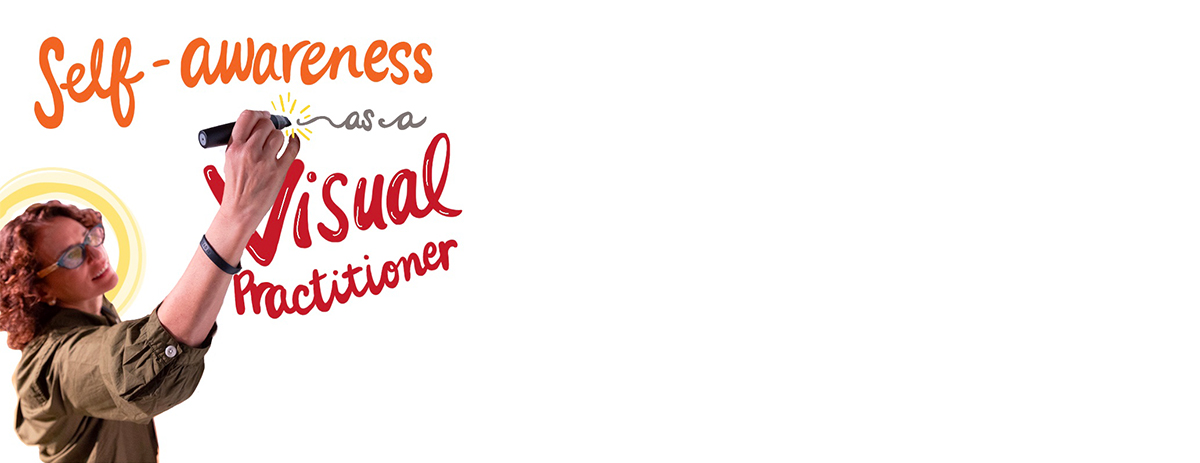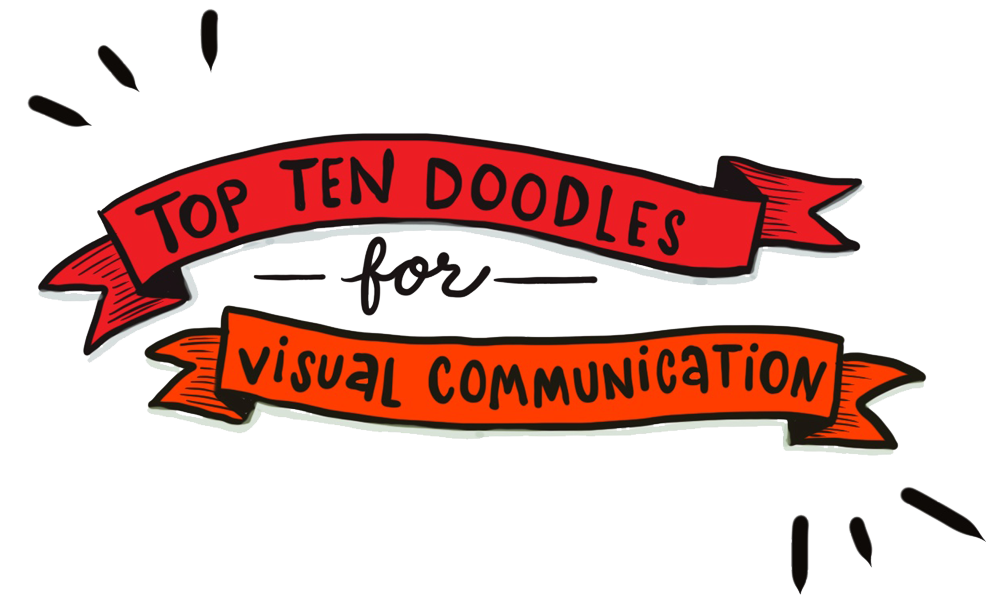Three Real Moments That Changed How I Listen and Capture Stories
When I get ready to draw a conversation — markers ready, ears open — I’m not just bringing my drawing tools. Self-awareness in visual practice is what keeps me grounded, present, and able to truly reflect the group’s stories rather than my own biases.
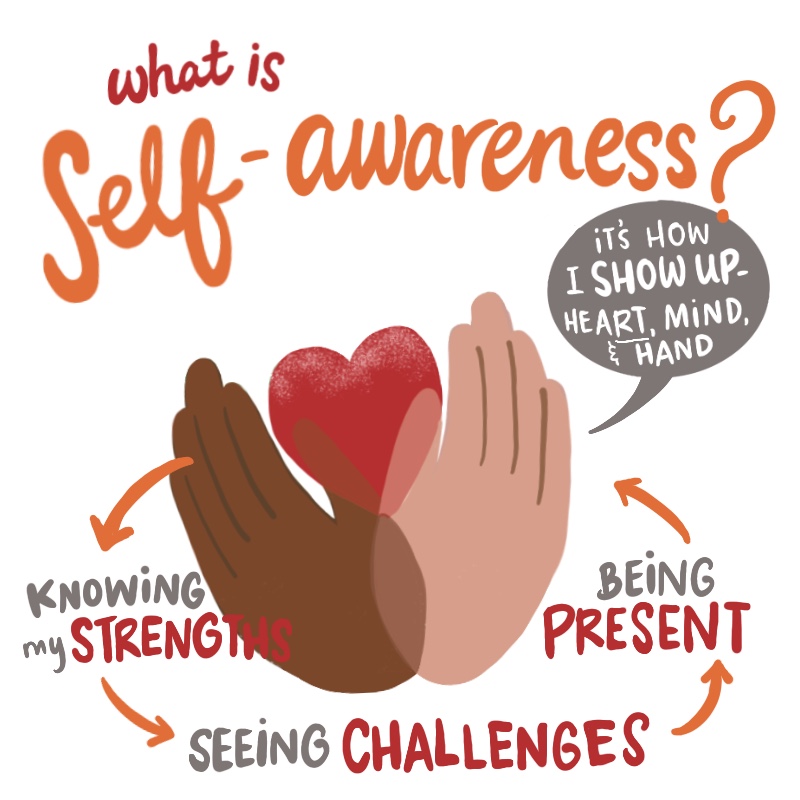
Self-awareness is what keeps me from:
- Doodling my way through discomfort instead of sitting with the pause
- Over-focusing on the loudest voice in the room (every group has one)
- Forgetting that how I show up changes what gets captured
It means I notice my patterns, track my energy, and stay genuinely present — so I can reflect your stories, not my projections and biases.
The truth?
My lived experiences shape this work far more than any set of markers ever could.
Growing up as a Jewish Gen X-er in the suburbs, living in NYC for 15 years, then moving to the Midwest where my identity feels very different from what’s around me — all of it informs how I listen, and what I see.
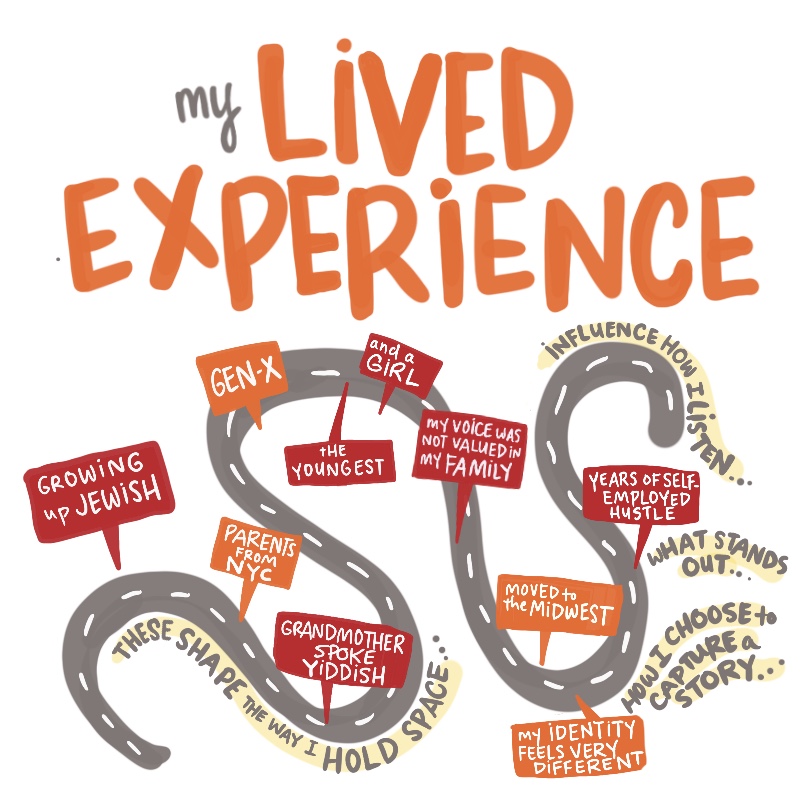
What Self-Awareness Looks Like in Practice
For me, a moment of self-awareness is any time I pause, notice my own internal reaction, and adjust.
It shapes how I listen, what stands out to me, and how I choose to capture or reflect someone else’s story.
It’s not always dramatic, but the key is noticing myself in the work.
And here’s why that matters: these moments often lead to learning, humility, and growth.
Three moments, in particular, have stayed with me.
1. The Personal Trigger Moment
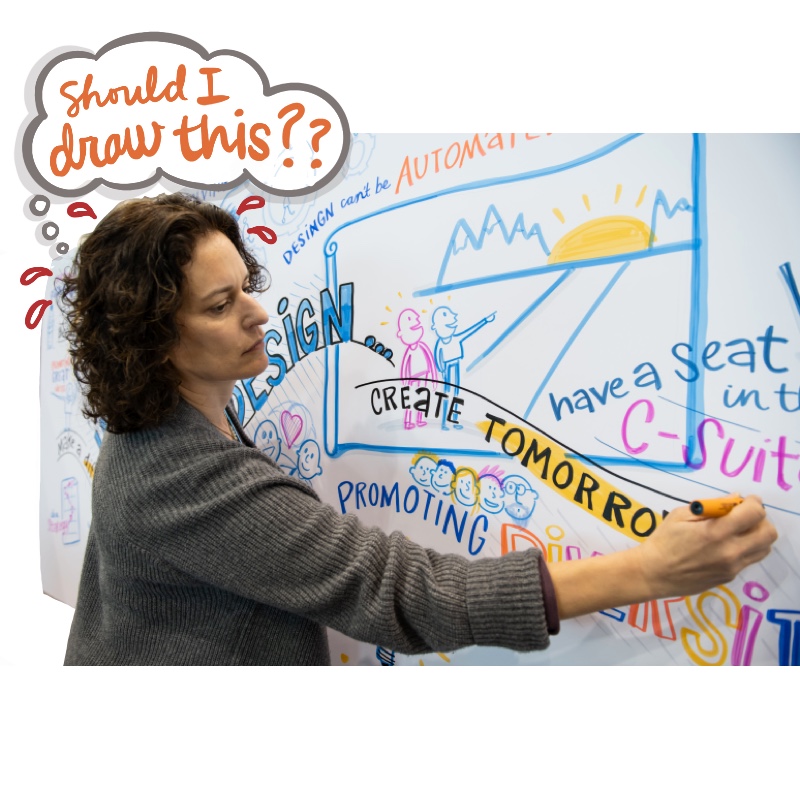
I was capturing a conversation as a visual practitioner when the facilitator asked the group to describe their weekend. One participant began sharing — with great enthusiasm — about a deer he had hunted and killed.
I froze. I hate hunting. It’s something I feel strongly about. In that moment, a wave of discomfort and panic hit me.
Do I draw this? Can I draw this?
I wasn’t sure I could.
I was triggered. And I knew it.
But then came the shift: I realized this moment wasn’t about me. I wasn’t drawing for myself — I was drawing for them. For the group. For the story that was theirs, not mine.
So yes, I drew the hunting scene. As respectfully and neutrally as I could.
2. The Impostor Voice Moment
There are moments — more than I’d like to admit — when I think, “Am I even good enough to be in this room?”
Sometimes, the conversation moves faster than I can follow. I fall a few thoughts behind, lose the thread, and suddenly I’m struggling to stay afloat. Other times, the discussion is deeply technical or packed with jargon — and I’m in over my head.
I’m trained to listen for big-picture themes, and I can usually find my way back. But there are moments when I feel completely out of my depth.
One that stands out: I was visualizing a panel discussion at a hospital foundation event. The speakers — researchers and physicians — dove into complex medical language I wasn’t prepared for. Without any briefing beforehand, the unfamiliar terminology made it incredibly difficult to capture their insights in real time.
That day, the impostor voice was loud. But I kept listening. I found what I could, drew what I could, and stayed present. Later, I gave myself grace — and made a mental note to ask for prep materials in the future.
3. The Cultural Identity Moment
I was the only white person in the room.
The group had gathered to talk about systemic adversity — and the energy in the space was warm, powerful, humorous, and deeply human.
Not because of me, but — if I’m being honest — likely in spite of me.
That day, I felt what it was like to not be part of the majority. I felt myself standing out in a way that made me want to shrink, fade into the background, and just listen.
And I did. I listened harder. I let the wisdom in the room guide my hand.
It was the first time I truly understood, in my body, what it means to be the “other.” That moment reshaped my practice — not just how I listen, but who I listen for.
Why These Moments Matter
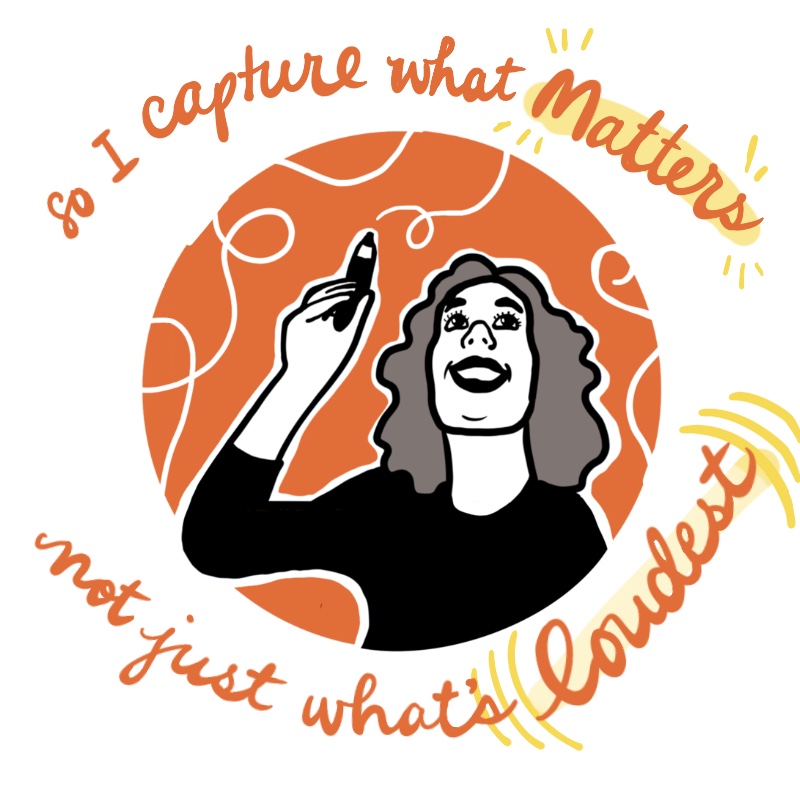
Self-awareness isn’t just an internal skill — it’s what allows me to show up with humility, adaptability, and respect.
It helps me recognize when my own bias, fear, or insecurity is getting in the way. It gives me the pause I need to either adjust my approach or simply stay present and keep going.
Because visual practice isn’t just about what’s being said.
It’s about how we show up to hear it.
Have you had a moment in your work that cracked something open for you? I’d love to hear it — share your story in the comments below.
